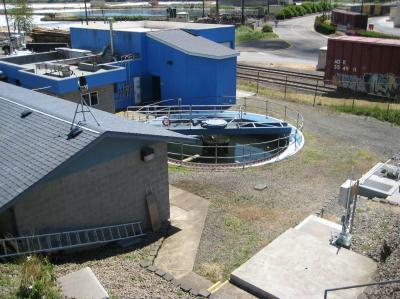Wastewater POTW
A publicly owned treatment work (POTW) is a term used in the United States for a sewage treatment system that is owned, and usually operated, by a government agency. In the U.S., POTW's are typically owned by local government agencies, and are usually designed to treat domestic sewage and not industrial wastewater.
As the government agency responsible for the local sanitary sewer system, the City of Toledo is authorized to construct, install, modify, and operate its wastewater collection, treatment, control and disposal system and discharge to public waters adequately treated wastewater only from the authorized discharge point and only in conformance with all the requirements, limitations, and conditions set forth in the attached NPDES Permit below. The local wastewater POTW consists of a wastewater collection system of pipes and pumps that convey wastewater from homes, businesses, schools and factories to the wastewater treatment plant. In its entirety, the wastewater POTW include five sewer lift stations, approximately 113,000 linear feet of sewer collection pipe, 7,600 linear feet of force-main piping, 575 manholes, and a treatment plant originally built in 1954 with upgrades completed in 1970, 1981, 1991, and 2000.
What is a "Wastewater Collection System"?
Toledo’s wastewater collection system is comprised of a network of public sewer pipes, lift stations, and private sanitary sewer laterals. Wastewater is "collected" from a building/residence in a small pipe called a private sanitary sewer lateral that is then connected to a larger pipe called a public sewer main line. The customer is responsible for the care and maintenance of the private sanitary sewer lateral up to and including the connection at the public sewer mainline, regardless of the location of the public sewer mainline.
The majority of the wastewater collected in the city is done so by gravity; meaning that the wastewater flows downhill until it either reaches a lift station. The lift station then "pumps" the waste to the wastewater treatment plant through pipes that are referred to as a "force main". If you looked at a map of the sewer system you would see a system much like a river system with small streams joining larger streams, those streams joining even larger streams and rivers and eventually ending at a lake or the ocean.

